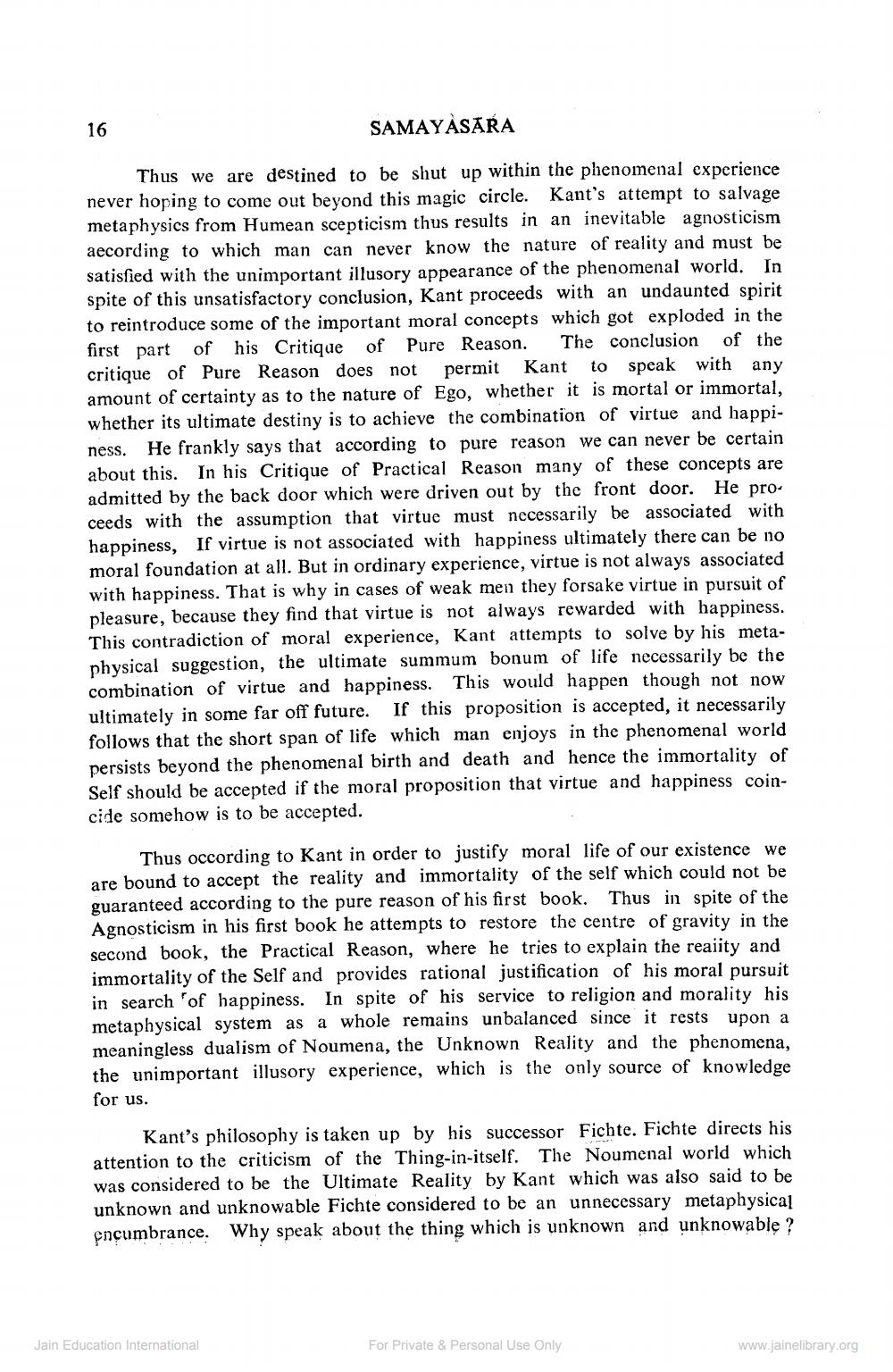________________
16
SAMAYASARA
Thus we are destined to be shut up within the phenomenal experience never hoping to come out beyond this magic circle. Kant's attempt to salvage metaphysics from Humean scepticism thus results in an inevitable agnosticism aecording to which man can never know the nature of reality and must be satisfied with the unimportant illusory appearance of the phenomenal world. In spite of this unsatisfactory conclusion, Kant proceeds with an undaunted spirit to reintroduce some of the important moral concepts which got exploded in the first part of his Critique of Pure Reason. The conclusion of the critique of Pure Reason does not permit Kant to speak with any amount of certainty as to the nature of Ego, whether it is mortal or immortal, whether its ultimate destiny is to achieve the combination of virtue and happiness. He frankly says that according to pure reason we can never be certain about this. In his Critique of Practical Reason many of these concepts are admitted by the back door which were driven out by the front door. He proceeds with the assumption that virtue must necessarily be associated with happiness, If virtue is not associated with happiness ultimately there can be no moral foundation at all. But in ordinary experience, virtue is not always associated with happiness. That is why in cases of weak men they forsake virtue in pursuit of pleasure, because they find that virtue is not always rewarded with happiness. This contradiction of moral experience, Kant attempts to solve by his metaphysical suggestion, the ultimate summum bonum of life necessarily be the combination of virtue and happiness. This would happen though not now ultimately in some far off future. If this proposition is accepted, it necessarily follows that the short span of life which man enjoys in the phenomenal world persists beyond the phenomenal birth and death and hence the immortality of Self should be accepted if the moral proposition that virtue and happiness coincide somehow is to be accepted.
Thus occording to Kant in order to justify moral life of our existence we are bound to accept the reality and immortality of the self which could not be guaranteed according to the pure reason of his first book. Thus in spite of the Agnosticism in his first book he attempts to restore the centre of gravity in the second book, the Practical Reason, where he tries to explain the reality and immortality of the Self and provides rational justification of his moral pursuit in search of happiness. In spite of his service to religion and morality his metaphysical system as a whole remains unbalanced since it rests upon a meaningless dualism of Noumena, the Unknown Reality and the phenomena, the unimportant illusory experience, which is the only source of knowledge for us.
Kant's philosophy is taken up by his successor Fichte. Fichte directs his attention to the criticism of the Thing-in-itself. The Noumenal world which was considered to be the Ultimate Reality by Kant which was also said to be unknown and unknowable Fichte considered to be an unnecessary metaphysical encumbrance. Why speak about the thing which is unknown and unknowable ?
Jain Education International
For Private & Personal Use Only
www.jainelibrary.org




